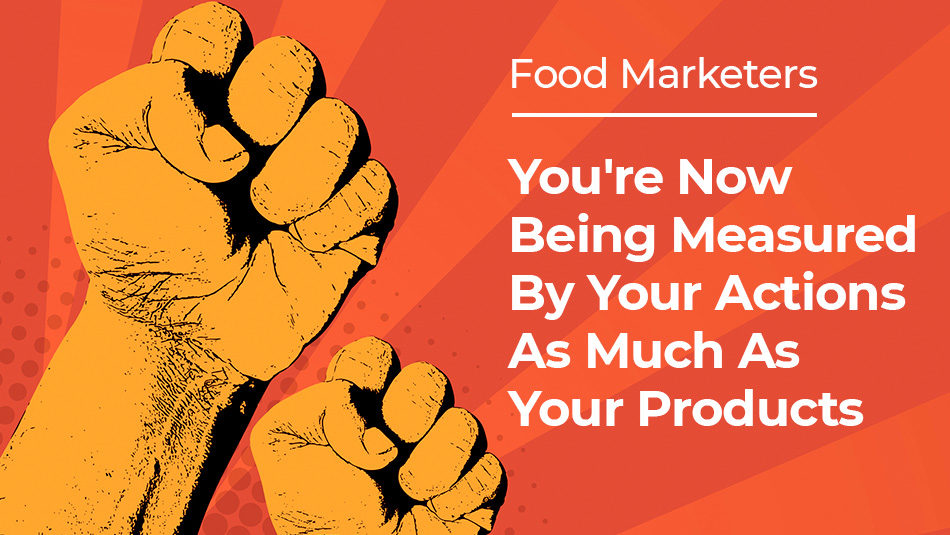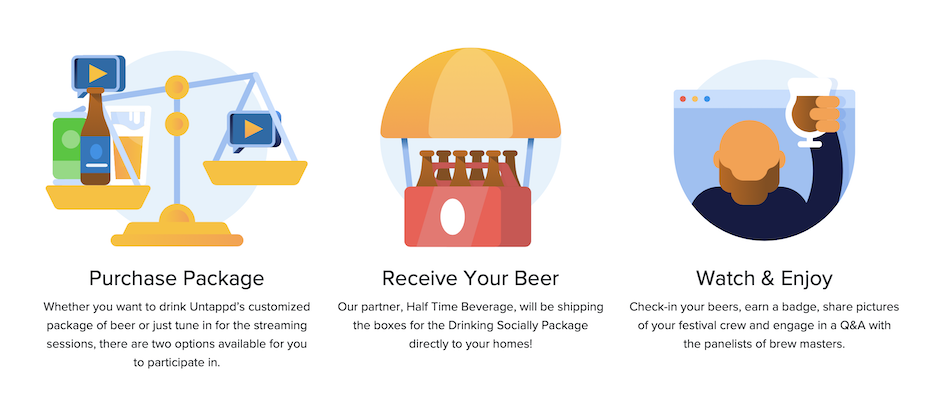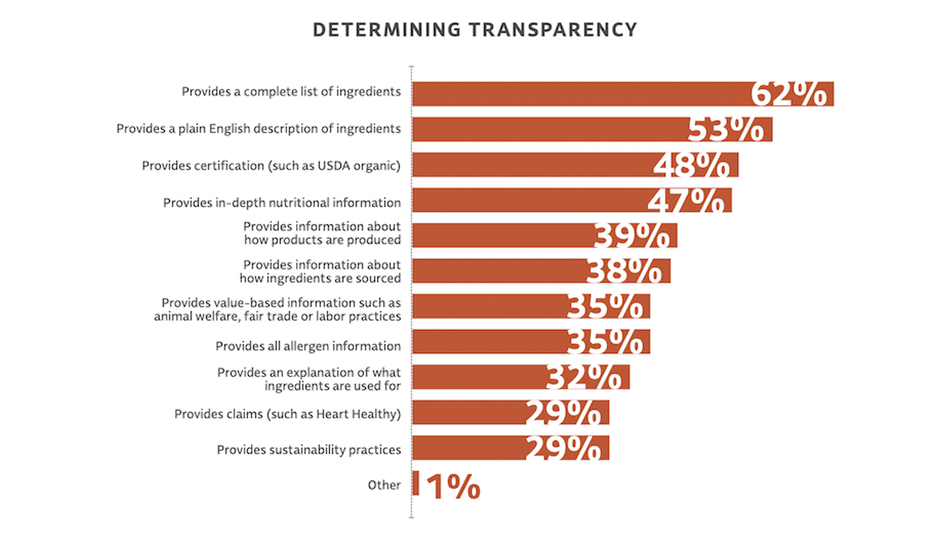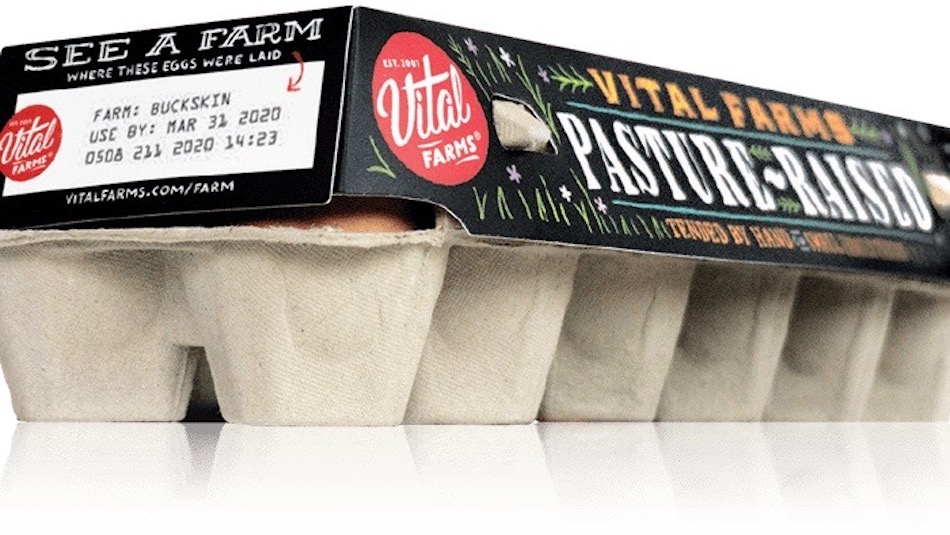
Food Marketers, You’re Now Being Measured By Your Actions As Much As Your Products
From the pandemic to the Black Lives Matter protests and subsequent boycotts and buycotts, food marketers are navigating the most complex marketplace in recent history. This environment has made consumers even more deliberate about the brands they support based on how they treat their employees, the planet and the communities in which they operate. Your task ahead is to decide how your brand responds. What values are central to your organization? Are you showcasing them in a way that is building connection?
While revenue impact may not be immediate, the food brands that continue to invest in their long-term brand reputation will be better positioned for long-term success.
Food Brands Need to Be More Human
Consumers want brands to be open about their beliefs, consistent in their actions and authentic in their approach. When a brand’s core values authentically align with those of its customers, the brand becomes more human and engagement follows. And on the flip side, when a brand’s values aren’t aligned or authentic, its customers demand action.
However, it’s important to remember shallow commitments will always fall flat with consumers. Authenticity takes time – sometimes even decades to lay down a solid foundation.
There are countless examples of brands with strong values at play, but let’s look at the progressive nature of Ben & Jerry’s. The brand remains committed to using their ice cream as a canvas for change. After years of brand activism work, they have authentically joined conversations other brands simply cannot approach. Just last year the brand further strengthened its position on social justice with the launch of Justice ReMix’d. Carrying a message that is perhaps even more fitting today, the flavor and the campaign it supports for criminal justice still hold a prominent place on the brand’s site. The foundation Ben & Jerry’s has set has served them well in recent months as social issues become top headlines.
Another great example of a brand showcasing its humanity is Chobani and their fast-tracked PB&J flavor supporting Feeding America. After working with food banks during the height of the pandemic’s food challenges, the Chobani team created this new flavor to extend their support. PB&J yogurt will be on shelves for a limited time, and 100% of the profits support the charity. And finally, taking a very different approach, PepsiCo demonstrated a spirit of collaboration with their open-source sequencing of the oat genome. Benefiting their Quaker Oats brand and the larger oat community, they are sharing data to further advance innovation in this space. If you’re unfamiliar with genome sequencing and why it’s important (like I was), you can learn more here.
Building and Supporting Your Community Absolutely Matters
Community and belonging have long been central to the human experience. In modern times brands have worked hard to create community in both the physical and digital spaces, but the landscape for both has drastically changed in recent months. So do social media and event marketing still make sense for food marketers?
Leveraging Social Media to Engage Community
To date, social media channels have presented food brands with a direct way to authentically connect and build community. However, the future of Facebook (and its sister platforms) is in flux with the announcement of the Stop Hate for Profit boycott, which is projected to go through the end of the year. Now, a few weeks into the future, the platform has barely felt an impact and many are saying, “It’s too big to fail.” But what is more interesting is that participating brands (and everyone watching) might be learning they’re also not seeing a huge impact from their choice to take a break.
If this lack of a response persists and more brands realize they have alternatives, there will be changes in the way food brands leverage these platforms in the future. Right now, if not already doing so, food brands need to diversify efforts across other social channels. Also, maintaining a healthy influencer program where returns are on average $5.20 for every $1 spent has shown positive results.
Can Event Marketing Build Community Digitally?
When looking at the event marketing space, there is even more change. Cancellations are happening across every sector. This leaves many marketers asking themselves if and how they transition an in-person event into a meaningful digital event. An obvious pivot would be a transition to social, but as mentioned above, these channels have their own set of challenges right now.
So should event marketing dollars shift completely to other activations? My advice? Don’t rule event marketing out completely just yet.

One example you can glean inspiration from is the beer app Untappd. This brand has reimagined its popular beer festivals into a robust virtual experience. After purchasing and receiving your curated package of craft beers online, you can join Untappd’s founder and a panel of brewmasters as they guide you through a live virtual-tasting experience. As I write this, the sessions available this month are completely sold out (despite the event’s integration with Facebook).
Consumers Want Food Brands to Be Transparent More Than Ever
Less frequent visits to the grocery store mixed with availability challenges have led to 65% of consumers forgoing their traditional buying habits to try new food products. In this fickle retail climate, transparency is becoming increasingly important when it comes to building trust and loyalty with consumers.
Today, more than 80% of consumers say transparency is “very important” when it comes to the products they purchase. In fact, 75% of consumers say they’ll switch to a brand that provides more in-depth product information. Food brands and retailers have various opportunities to showcase the work they are doing to meet this consumer need. Clear labeling (62%), using consumer-friendly language (53%) and certifications (48%) top the list for ways consumers want brands to be transparent. However, value-based information such as animal welfare, fair trade and labor practices (35%) is also very important.

As transparency becomes standard practice, food marketers are finding cross-channel opportunities to share what they are doing to be more transparent. While there are many examples of food brands embracing different levels of transparency, Texas-based humane egg producer Vital Farms proves transparency resonates with consumers. Just this week, the company announced it has filed for an IPO.
First launched in 2007, Vital Farms has always made sustainability and transparency an integral part of its marketing. The brand attributes part of their success to these core values. And as they announce their plans to go public, they shared, “We believe the success of our brand demonstrates that consumers are demanding premium products that meet a higher ethical standard. We have expanded into the mainstream channel while still continuing to command premium prices for our ethically produced products, which sell for as much as three times the price of commodity eggs.”

There Are Many Paths Toward Transparency
While having a sustainable supply chain is marketable, it’s not the only path to transparency food brands can take. Consider an entirely different example with Tyson Foods. While still very much under close scrutiny, the company remains the only U.S. meat producer to continue releasing its workers’ COVID-19 test results to the public. They’re doing this even after their transparency tactics led to China issuing a ban on products from one of its factories. With the brand’s highly touted value of transparency, you’ll undoubtedly continue to see Tyson Foods in headlines as it navigates the current marketplace.
Create a Culture That Embraces a Growth Mindset
Never before have brand marketers been asked to pivot their entire plans on the drop of a dime like they are now. In the past few months, campaigns have been reimagined, shifts from physical to digital have transpired, new channels have been opened and budgets have been (and continue to be) reallocated. While this has created uncertainty and challenges, it has also presented opportunities for brave food marketers to reimagine how they are connecting with their customers. Especially in this retail climate, where brand loyalty cannot be taken for granted, brands need to be more than the products they sell. Their actions also matter.
Moving forward, you can be sure change will be a constant. But even in pre-pandemic times, change was already knocking on the door. While it may seem like the floodgates are open as of late, it’s important to remember: With change comes an incredible opportunity to innovate. Whatever path you take, remember food marketing should make the kind of impact that builds true, authentic connection and community.




